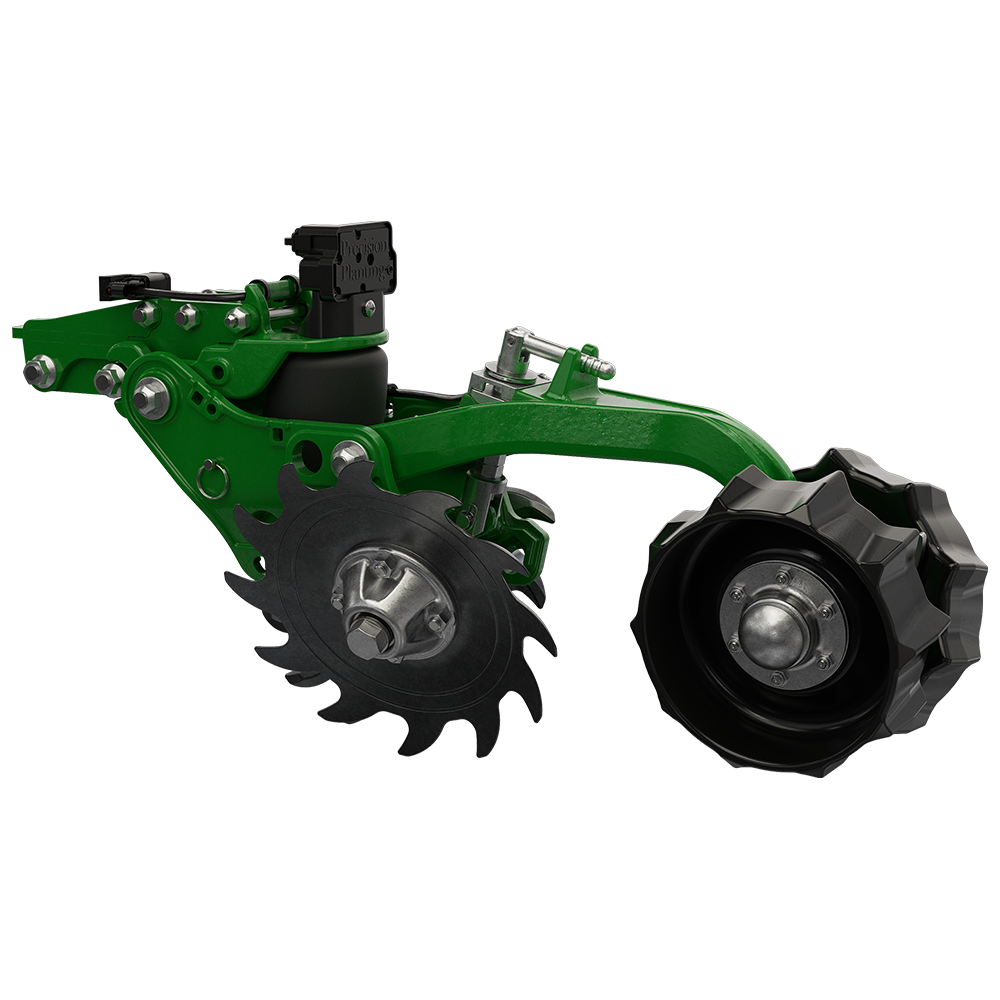FurrowForce
Setting your closing system correctly is tough. FurrowForce is a two-stage closing system that adapts to your planting conditions to remove air pockets and firm soil to keep moisture, giving you confidence that your crops will germinate the best that they can.

The Struggle With Getting Seed Environment Right
When the planter is finished with its pass, the seed should be in an environment where there is no evidence that the planter ever created a furrow, placed the seed, and closed the furrow. This environment should have no air pockets and be mellow so that as the seed germinates it can emerge, while at the same time being firm enough to hold moisture. It’s a delicate balance that needs to be achieved, and there is a significant yield opportunity in getting it right.
Getting it right means that the variability in the field has been accounted for and adjusted for and that the germination of each seed has happened at the same time. Yield loss occurs when seeds germinate and emerge at inconsistent times.
Since getting the seed environment right is so important to the profitability of your farming operation, what is preventing us from getting it right? Most of the time it comes down to knowledge.
How FurrowForce is Different
FurrowForce works fundamentally differently than other closing systems. In the first stage, notched wheels work to close the seed furrow from the bottom up, eliminating air pockets. In the second stage, stitch wheels carry weight on them to firm the soil over the seed to retain moisture.
FurrowForce on its own is a powerful product, but you also have the option to add load cells to measure and set weight on the closing system from the 20|20 monitor. When a load cell measures more or less weight than has been set on the 20|20, the FurrowForce system will automatically adjust row-by-row the force applied to the unit. When the second stage stitch wheels are carrying the correct weight, you know the first stage notched wheels are cutting into the soil at your chosen depth.
The 20|20 gives the operator a complete picture of planting performance, including metrics for closing like closing margin, good closing percent, and closing uniformity.
When planting, do you know the answer to these questions:
- How much weight is on the closing wheels?
- Are your closing wheels maintaining ground contact without compacting?
- Is the soil placed optimally around each seed?
- Which is the best option for wheels, staggering, and spring pressure setting?
Digging a few seeds per field gives you some level of insight but it is a tiny percentage of the total seeds planted.
Manage Soil Density
Many growers think about proper closing as having the seed covered. But putting soil over the seed is only part of the equation. Managing soil density to maintain moisture is a key component of creating the best environment for the seed. In conventional tillage and easy-to-close environments, growers look behind the planter and when they don’t see an open trench, they are satisfied. But in this environment, tillage was done ahead of the planter which introduces air into the soil and dries it. If the soil density over the seed is loose, the soil continues to dry out and moisture that is needed for quick germination is quickly lost.
FurrowForce solves this problem by maintaining a set amount of weight on the stitch wheels to firm the soil over the seed, remove air pockets, and retain moisture for a longer period of time to give each seed the chance to germinate consistently.

